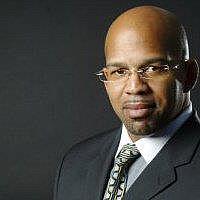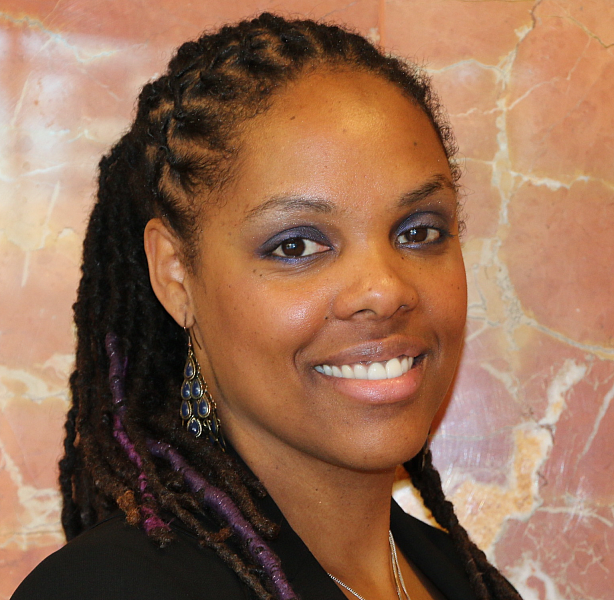Covering Unrest: When Journalists of Color Become the Target
Journalists have been arrested, shot with rubber bullets, and sprayed with tear gas and pepper spray as protests have engulfed the nation in the wake of George Floyd’s murder by Minneapolis police. The arrest of CNN Correspondent Omar Jimenez during a live shot in Minneapolis was only the most visible example in a series of perilous police encounters for journalists. And the hazards facing reporters in the field go well beyond physical safety. During a time when COVID-19 has already left the reporting ranks battling exhaustion and vicarious trauma, covering these protests and police clashes can exact a steep toll on journalists’ mental health. That’s especially true for black journalists and other journalists of color, who are covering systemic racism against their own communities and who face unique risks as members of the media and because of their race. In this webinar, we’ll take a deeper look at those physical and mental health risks, identify coping strategies, and offer practical tips and suggestions on staying safe while covering two overlapping crises — nationwide protests and COVID-19.
This event is co-sponsored by the Maynard Institute and the National Association of Hispanic Journalists.
It is being offered thanks to the generous support of The California Endowment and individual supporters.
Panelists

Martin G. Reynolds is the co-executive director of external affairs and funding at the Maynard Institute. Prior to that role, Reynolds served as a senior fellow for strategic planning for the institute. Reynolds is co-founder of Oakland Voices, a community storytelling project that trains residents to serve as community correspondents. He was named as Digital First Media’s Innovator of the Year for his work on Oakland Voices. Prior to his Maynard fellowship, Reynolds was senior editor for community engagement and training for Bay Area News Group and served as editor-in-chief of The Oakland Tribune between 2008-2011. His career with Bay Area News Group spanned 18 years. Reynolds was also a lead editor on the Chauncey Bailey Project, formed in 2007 to investigate the slaying of the former Oakland Post editor and Tribune reporter. Reynolds also serves as the director of the Reveal Investigative Fellowships from the Center for Investigative Reporting. Reynolds also conducts Fault Lines diversity training programs for media companies and colleges and universities.

Carlos Martinez de la Serna is program director for the Committee to Protect Journalists. Prior to joining CPJ in 2018, he worked as a reporter and digital journalist in the U.S., Spain, and Japan, covering issues including current affairs, biomedical research, and North Korea’s nuclear program. He is a founding member of the mapping startup Carto, co-founder of the nonprofit organization porCausa, and a former director of digital innovation at Univision News. Martinez de la Serna is a research fellow at the Tow Center for Digital Journalism at Columbia University and a former John S. Knight fellow at Stanford University.

Dr. Glenda Wrenn is the chief medical officer of 180 Health Partners, where she leads the health provider’s programs addressing the social determinants of health. Previously, Dr. Wrenn served as founding director of the Kennedy-Satcher Center for Mental Health Equity in the Satcher Health Leadership Institute at Morehouse School of Medicine in Atlanta, where she was an assistant professor of psychiatry and behavioral science. She is board certified in psychiatry. She received a bachelor of science in chemistry and nuclear engineering from the U.S. Military Academy at West Point and graduated from Jefferson Medical College. She completed her residency in psychiatry at the University of Pennsylvania, where she was chief resident and a Robert Wood Johnson Foundation Scholar in Clinical Research. As a researcher, she has focused on resilience, urban residents suffering from posttraumatic stress disorder and members of the armed services.
Suggested reading & resources
- CPJ Journalist Security Guide: Covering the News in a Dangerous and Changing World
- CPJ Safety Advisory: Covering U.S. protests over police violence
- CPJ Safety Kit
- “Journalism for Black Lives: A Reporting Guide,” The Movement for Black Lives and Free Press
- “Black Journalists Are Exhausted,” by Patrice Peck, The New York Times
- “Police targeted journalists covering the George Floyd protests,” by Katelyn Burns, Vox
- “George Floyd and the special hell reserved for black journalists covering his killing,” by LZ Granderson, Los Angeles Times
- AP Diary: To be black and a journalist at this moment, by Amanda Bennett, deputy managing editor of The Associated Press in New York
- We crunched the numbers: Police, not protestors, are overwhelmingly responsible for attacking journalists, Trevor Timm, The Intercept, June 4
- Inside the Revolts Erupting in America's Big Newsrooms, by Ben Jones, New York Times, June 7
- Mapping Police Violence, meticulously sourced from the three largest, most comprehensive and impartial crowdsourced databases on police killings in the country: FatalEncounters.org, the U.S. Police Shootings Database and KilledbyPolice.net
- U.S. Press Freedom Tracker, produced by a collaboration of the Knight First Amendment Institute at Columbia University, the Reporters Committee for Freedom of the Press, Reporters Without Borders, Index on Censorship and professional societies, news organizations, and free expression advocates; includes Journalist Incidents Covering Floyd Protests
- Photoshelter Blog, a rolling list of assaults against photojournalists by police and protestors covering the George Floyd protests around the country
- Ethical Reporting on Police Violence and Black-led Resistance: Tips for Journalists, Medium
- Git Hub: Protest Tips
